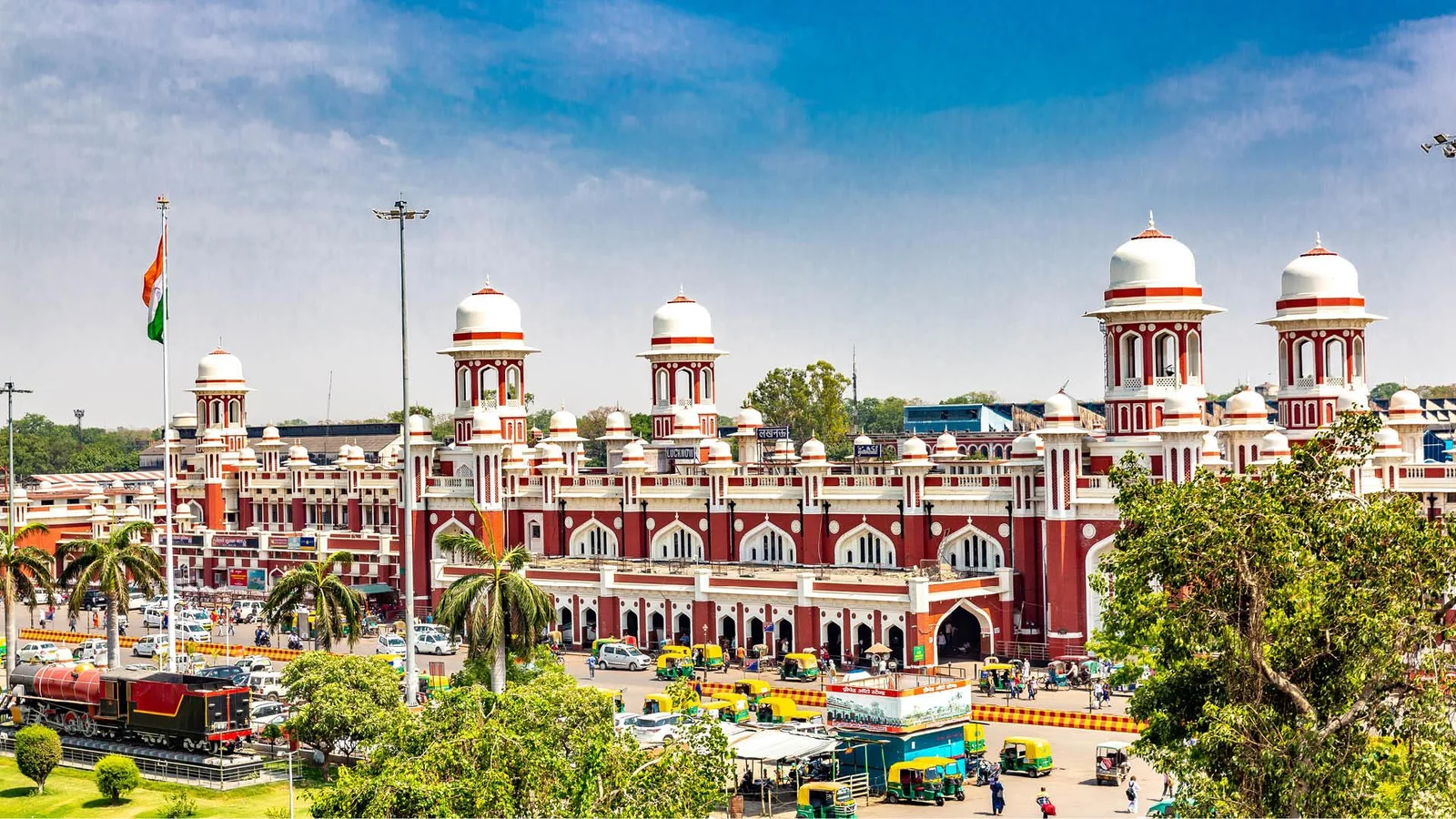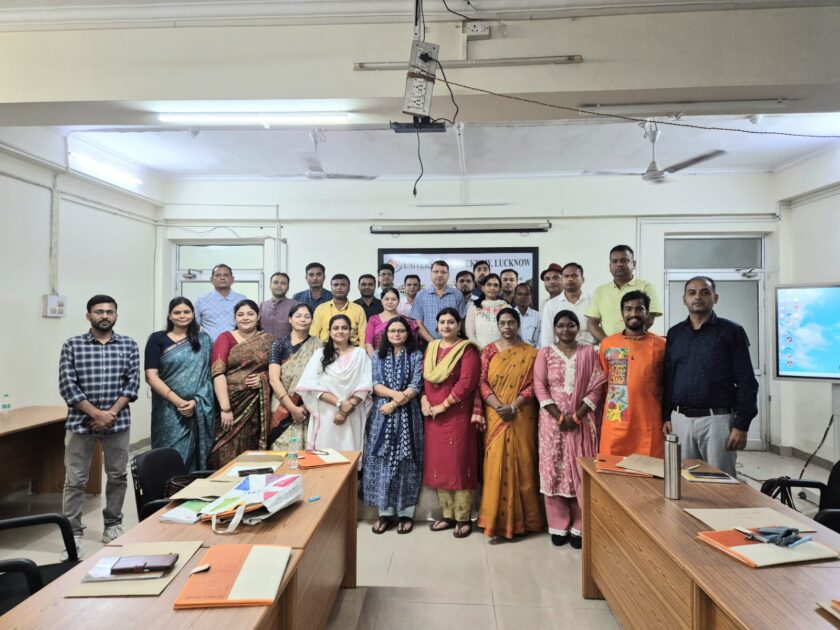Lucknow: In the heart of Lucknow—the City of Nawabs—stands Charbagh Railway Station, a masterpiece of architecture, a living museum of history, and a meeting ground of cultures. In 2025, this grand red-and-white edifice turns 100, an occasion not just for celebration but for reflection on a century of journeys, both literal and symbolic.
More than just a railway station, Charbagh is a story written in brick, stone, and domes. It is where the echoes of the Nawabi past meet the rhythms of modern India; where freedom fighters once passed through in disguise, and where pilgrims, poets, and politicians have stood under its arches. As one of India’s most beautiful railway stations, Charbagh’s centenary offers an opportunity to revisit its genesis, architectural brilliance, historical moments, cultural resonance, and its place in the evolving Indian transport landscape.
The Genesis: From Four Gardens to a Railway Marvel
The name “Charbagh” means “four gardens” in Persian, a direct reference to the site’s pre-railway incarnation. Long before the sound of steam engines filled the air, this land was a lush Mughal-style quadrilateral garden, commissioned by Asaf-ud-Daula, the fourth Nawab of Awadh. Following the charbagh design—four symmetrical sections divided by intersecting water channels—it was a living evocation of the paradise gardens described in Persian poetry and the Quran.
By the late 19th century, as the British consolidated control after the 1857 uprising, the strategic location of Lucknow made it an ideal hub for expanding railway infrastructure. The British administration, keen to knit India together through rail lines, chose the Charbagh garden site for a grand new station that would symbolize both efficiency and imperial prestige.
The foundation stone was laid on March 21, 1914, by Bishop George Herbert. British architect J.H. Horniman and Indian engineer Chaubey Mukta Prasad oversaw construction, blending European and Indian styles. After nine years of work, the station opened officially on August 1, 1925, at a cost of ₹70 lakh—a staggering sum for the era.
On the day of inauguration, C.L. Colvin, an East Indian Railway agent, placed a time capsule inside one of the turrets. Containing a coin and a newspaper from 1925, it was a symbolic gesture meant for future generations—a reminder that Charbagh was built to stand the test of time.
Architectural Splendor: A Chessboard of Domes and Arches
From the moment you approach Charbagh, its Indo-Saracenic glory commands attention. The red-and-white façade, dotted with domes, turrets, and archways, resembles a Rajput palace, while its overall proportions echo Mughal symmetry. From above, the station’s turrets and domes resemble chess pieces on a board—a playful nod that cements its uniqueness among Indian railway stations.
One of the station’s most intriguing features is its acoustic design. Despite being one of the busiest rail hubs in North India, the noise from the tracks is barely audible under the main portico. This is thanks to the station’s curved façades and high, enclosing walls, which disperse sound. Water reservoirs are cleverly concealed within the structure—practical yet hidden, a hallmark of intelligent early 20th-century design.
Inside and around Charbagh, history blends seamlessly with living tradition. On Platform 2 stands the Khamman Peer Baba Mazar, a 950-year-old Sufi shrine dedicated to Saint Shah Syed Qayamuddin. Devotees from all religions visit every Thursday, lighting incense and tying threads for blessings. Just outside, a Hanuman Temple attracts daily worshippers. Together, they embody Lucknow’s famed Ganga-Jamuni Tehzeeb—the harmonious mingling of Hindu and Muslim traditions.
Near the shrine rests an old steam engine, a relic of the station’s early days, and occasionally, visitors encounter a traditional “Monkey-Man” performer—a rare surviving figure from Lucknow’s street culture.
A Witness to History: From Freedom Struggle to Legendary Encounters
Charbagh’s walls have witnessed more than train departures—they have stood silently at the crossroads of history.
During the 1857 uprising, the site served as an arsenal for freedom fighters, reportedly housing the enormous cannon “Nanakmatta,” hauled by 28 bullocks.
In 1916, the station became the setting for the first meeting between Mahatma Gandhi and Pandit Jawaharlal Nehru during the Lucknow session of the Indian National Congress. Gandhi used the occasion to call for ending the export of Indian indentured labor, a major social milestone.
Two decades later, in 1936, Gandhi returned to Lucknow for another Congress session, again passing through Charbagh, which by then had become a familiar political landmark.
Perhaps the most dramatic moment came in December 1928, when Bhagat Singh, Rajguru, and Durga Bhabhi fled Lahore after assassinating British officer Saunders. Disguised to evade capture, they boarded the Howrah Mail and stopped briefly at Charbagh. Bhagat Singh bought tea from the platform vendor, while Durga Bhabhi sent a coded telegram to their comrades—a fleeting but vivid episode in the revolutionary narrative.
A Hub of Connectivity and Culture
Charbagh isn’t just a historical monument—it is one of India’s most important transport nodes.
It houses two major railway entities:

- Northern Railway (NR)—the “Badi Line”
- North Eastern Railway (NER)—the “Choti Line” (Lucknow Junction, station code LJN)
With nine platforms in the NR section and six in the NER, Charbagh handles more than 230 trains daily, linking Lucknow to every corner of the country. Since the opening of the Lucknow–Kanpur line in 1867, the station’s strategic location has made it indispensable to the region’s economy and mobility.
Yet, beyond timetables and tracks, Charbagh thrives as a cultural space. The annual Urs festival at Khamman Peer Baba’s shrine transforms the station area into a vibrant fairground for four days. Passengers and pilgrims mingle in a scene where the boundaries between travel and devotion blur.
Challenges and Modernization in the 21st Century
As Charbagh turns 100, it faces the classic tension of heritage in a growing metropolis: how to modernize without erasing its soul.
Traffic congestion, inadequate parking, and sanitation issues have plagued the station for years. The front lawn—once part of the original gardens—is now earmarked for redevelopment, with proposals for underground parking and a multi-use complex to ease passenger flow.
Porters (coolies), still carrying heavy loads manually, face an uncertain future. While their work is a familiar part of the station’s rhythm, calls for mechanized luggage systems are growing—sparking debates about employment, dignity, and modernization.
Under the Amrit Bharat scheme, Charbagh is undergoing a phased makeover: escalators, lifts, upgraded waiting halls, real-time digital train boards, and better accessibility for differently-abled passengers. Integrating the station with the expanding Lucknow Metro will bring both opportunity and challenges, especially in preserving the beloved footover bridge—a spot for panoramic photos of the station’s domes and bustle.
Charbagh’s Cultural Resonance: Poetry, Pride, and Public Memory
Charbagh is woven into Lucknow’s identity. It has been celebrated in literature, such as Asrar-ul-Haq Majaz’s 1933 poem Raat Aur Rail, which captured the romance of night trains departing from its platforms.
The phrase “Muskuraiye, aap Lucknow mein hain” (Smile, you are in Lucknow), once proudly displayed at its entrance, became part of the city’s ethos—welcoming travelers with warmth and charm.
On social media, posts flood X (formerly Twitter) with nostalgic photographs, centennial tributes, and personal anecdotes. Travel companies like Tornos offer guided heritage walks around Charbagh, where visitors learn to spot its hidden design details, from Mughal-style chhatris to British clock faces.
Looking Ahead: The Next 100 Years
As Charbagh steps into its second century, its challenge is to remain relevant without losing its old-world grace. The railway authorities’ vision includes integrating high-speed rail corridors, expanding passenger capacity, and developing adjacent commercial spaces.
Yet, Charbagh’s essence will always lie in the small, human moments: a child pressing their nose to the glass as the train pulls in, an elderly couple sharing a thermos of chai on the platform, a porter weaving through the crowd with practiced ease.
In a city where heritage often struggles against the tide of development, Charbagh has shown resilience. It has adapted through colonial rule, independence, technological leaps, and social change—without surrendering its identity.
A Station That Makes You Pause
Charbagh Railway Station is not merely about arrivals and departures. It is about Lucknow itself—its tehzeeb, its layers of history, its openness to all.
Whether you arrive here as a first-time visitor or return as someone who knows every dome and turret by heart, Charbagh asks you to slow down. Look up at the arches. Listen to the muffled sounds of the trains. Smell the incense from the shrine. And remember—you are standing where Nawabs once walked, where Gandhi and Nehru met, where Bhagat Singh vanished into the crowd.
On its centenary, Charbagh stands not just as a transport hub but as a living emblem of resilience, beauty, and connection—a station that invites you, in the truest Lucknowi way, to smile.






